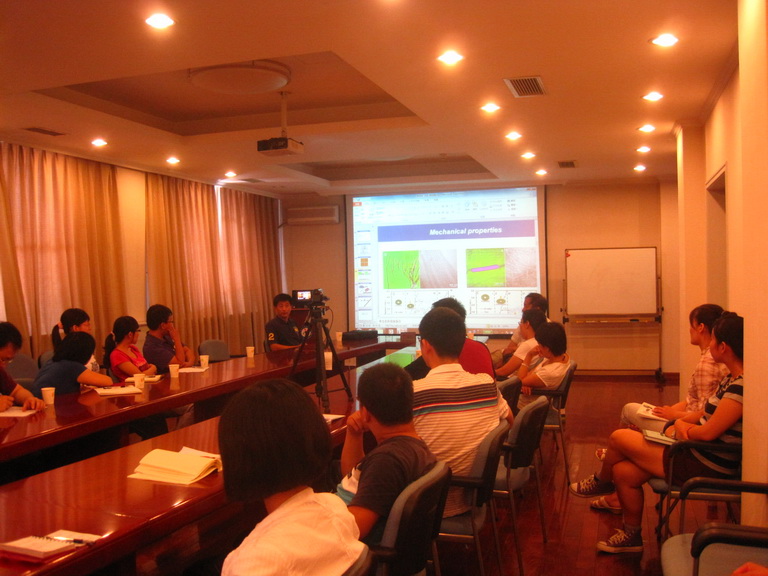清洁能源实验室系列报告(十一) 2011-7-26

报告题目:Self-Assembly of Bionanoparticles
报告时间: 2011年7月26日(星期二)上午 10:00 – 11:30
报告地点: 中科院物理研究所 BII 404 会议室
报告人: 牛忠伟 中国科学院理化技术研究所研究员
报告人简介:
1974年5月生,2003年中国科学院化学研究所高分子物理与化学专业获博士学位。荣获中国科学院首届50篇优秀博士论文,中国科学院优秀院长奖学金。2004年在比利时鲁汶大学从事博士后研究。2005-2007年美国南卡罗莱纳大学化学与生物化学系进行博士后研究。2008年起在南卡罗莱纳大学纳米中心任研究助理教授。在Angew Chem, Nano Lett, Adv Funct Mater等杂志上发表SCI论文30余篇。现任中国科学院理化技术研究所研究员,研究领域:1. 电纺丝技术制备生物纳米材料;2. 生物传感器的研制;3.功能性生物相容性凝胶的制备。
报告简介: Bionanoparticles such as viruses, ferritins, and other supramolecular protein assemblies are derived from Nature’s own designs of biomolecules that self-assemble based on non-covalent interactions to become highly organized supramolecular systems. They are monodispersed in size which are ideal nanoparticles for the self-assembly study. In addition, the bionanoparticles provide wide array of shapes as rods and spheres, and variety of sizes spanning from tens to hundreds of nanometers. These protein structures are evolutionary tested, multi-faceted systems with highly ordered spatial arrangement. Furthermore, the surface functions can be easily manipulated chemically or genetically without disrupting the integrity of these bionanoparticles. The presence of different surface functionalities and charges may greatly alter the assembly behavior of these particles.
Herein, we report the formation of diverse patterns that result from drying a solution of rod-like tobacco mosaic virus (TMV) particles and different proteins in a glass capillary tube. The tube was used to not only provide a confined space, but also to create a curved surface with multiple forces at the contact line to control the self-assembly process. TMV is an ideal candidate for these studies because of its rod-like morphology and high monodispersity.
